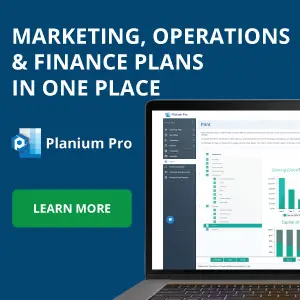Managing Inflation: Tips For Your Small Business
Running a profitable small business has become much more difficult as we approach the second half of 2022. You are not alone if you are one of the many small business owners dealing with growing costs, unpredictable economic conditions, and the impact of inflation. Fuel and energy, food and other home products, airfare and housing, are among the common goods most affected by inflation and undergoing exponential price increases. While you cannot control these things, you can take steps to put your company in the best possible position.

What Causes Inflation?
Cost increases (or inflation) may occur when demand exceeds supply, such as during an economic boom. If consumers have more money to spend, they are more inclined to purchase more goods and services. Businesses may raise prices in response to rising demand, either because they lack sufficient supply or understand they will not lose business.
Inflation can happen regardless of economic conditions; reducing oil extraction can raise gas prices, and supply chain disruptions can cause manufacturing to stop. Furthermore, COVID-19 has forced businesses to close and congested transportation, placing downward pressure on demand. Rising oil prices, as well as skyrocketing gas prices, are to blame.
During periods of higher inflation, financial institutions may restrict borrowing conditions, resulting in a scarcity of cash. Furthermore, small business owners may lose money as supplier costs rise, exacerbated by clients affected by inflation and late in paying their invoices.
Inflation is particularly difficult for small businesses. According to SCORE’s Spring 2022 research The Megaphone of Mainstreet: Inflation & The Economy, which included comments from 1,199 entrepreneurs, 93% are concerned about inflation. To keep up with inflation, those same small-business owners found it essential to raise prices by 11% on average. Raising pricing is a normal reaction for many small business owners to inflation. While this method may be necessary for some instances, it can also result in client loss, especially if implemented too soon. Let’s look at ways to safeguard your business from inflation and keep it profitable.
Streamline and Automate Processes
Restructuring your company’s warehouse can help you save money, such as investing in new shelving, which can significantly increase your company’s productivity after installation. Improving processes may entail investigating automation for your organisation. Re-examine strategies as labour costs continue to rise – Could time-consuming tasks be automated? Can software automate business procedures such as scheduling, order taking, billing, and payment collection? Is automatic processing an option when producing a product or performing a repetitive task?
Investing in technology and automation has proven beneficial during times of crisis, not just when inflation is high. Organisations that invested in AI and automation soon before the pandemic fared better than those that did not. You can do more in your firm while spending less by embracing technology, freeing up your and your staff’s time to focus on higher-level problems.
Common examples of prudent technology investments include:
- Workflow and intelligent document processing using robotic process automation (RPA),
- Factory automation,
- Store and restaurant self-service kiosks,
- Inventory control using radio-frequency identification and barcoding systems.
Reorganise Debt and Borrow Smartly
Debt is an inevitable aspect of running a business, but the lines between good and bad debt can blur when inflation is strong. It is good paying down variable, high-interest credit card debt as soon as possible, and if that isn’t possible, transfer it to cards with lower interest rates. Even if you have to take out a second loan on your business or home, refinancing high-interest debt into a fixed-interest rate loan with a longer duration is a better option.
Reconsider Your Pricing
Inflation can provide obstacles, and your company must adjust to these changes to thrive. If your costs are consistently rising, you may want to review your rates or make some compromises. Rather than raising prices across the board, examine supply-specific issues and increase pricing accordingly. This is a difficult moment for everyone except business owners and consumers. Therefore, your customers are likely to understand the necessity to change prices.
If you work in the food and service industry, your company may have been struck harder than most. Determine where you need to increase pricing and then take the necessary steps. While it is vital to respond to changing financial conditions and adjust pricing as needed, keep in mind that inflation does not last forever. Being adaptable pays off in the long run.
Prioritise Cash flow
Cash flow is always critical for small firms, and a cash shortage is the leading cause of business failure. Consistent cash flow allows you to pay your vendors and invest in new prospects, making your firm run more smoothly.
Despite this, many firms suffer with cash flow. Look for strategies to encourage your clients to pay your company sooner to increase cash flow. Of course, you’ll want to be adaptable because they also feel inflation’s pinch. You should also consider giving discounts to clients who pay their bills on time. You might also start requesting an upfront deposit for larger products or services.
Concentrate On Employee Retention
You are not the only one affected by inflation. Your staff are also feeling the pinch as they are paying more for everyday necessities. However, if inflation rises, your employees may also anticipate their compensation to grow. According to a Payscale report, 44% of businesses lose employees due to wages. Employees will certainly expect you to meet, if not exceed, the cost of inflation.
If you cannot afford an overall pay rise, there are other ways you can assist your staff in meeting their financial obligations. Allowing employees to work remotely, for example, could reduce transportation expenditures. You might also provide child care, tuition, or home insurance stipends. Proactive conversations with your staff about their wage expectations are critical. Inquire about how inflation affects their lives and what kind of wage range or benefits package will help.
Outsource
Hiring costs are rising in tandem with rising prices. However, if your firm wants to run smoothly and grow during an economic downturn, you cannot afford to skimp on excellent personnel. Fortunately, there are methods to retain top personnel without going bankrupt.
Remote labour and outsourcing have proven to be lifesavers for firms, particularly during financially challenging periods such as the COVID-19 epidemic. Entrepreneurs may now access top global talent at low cost thanks to virtual assistants. Furthermore, these remote workers might do administrative, personal, and accounting chores, allowing organisations to run more efficiently. So, if you’re wanting to hire during an inflationary period, consider hiring remotely.
In an inflationary environment, the sensible corporate approach is to minimise expenses wherever possible without sacrificing work quality, and employing remotely is an economical and risk-free way to do it.
Resort to Professional Advice
Your accountant may assist you with much more than your BAS and tax returns, including financial modelling and expertise. Make an appointment with your accountant after your financial health check. Request that they convert your profit and loss statement into a projection using your results and compute your break-even point. You can then calculate the margin required to make a net profit that recovers your return on investment (ROI), loan principal, and additional recoveries specific to your business.
After you’ve thoroughly reviewed your costs, taken action to cut them where possible, and established a financial forecast for your company’s future, it may be time to reconsider your pricing structure.
Final Thoughts
Inflation is difficult for everyone, and it can be frightening to think about the future in these uncertain times, especially for a small business. All you can do is take the appropriate precautions to be ready for any difficult situation. We hope you found this article useful and will implement the steps outlined in it into your business plan.









